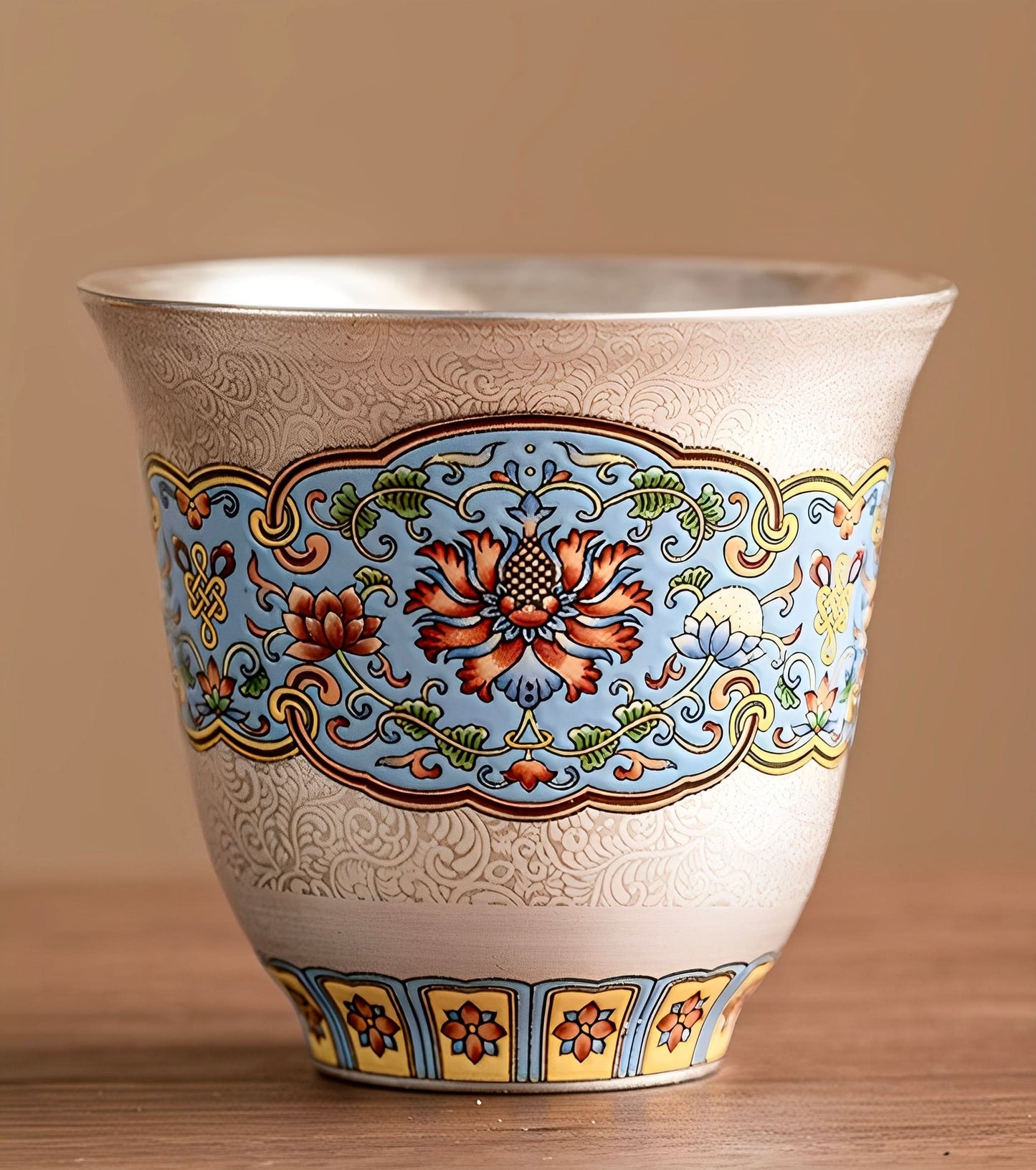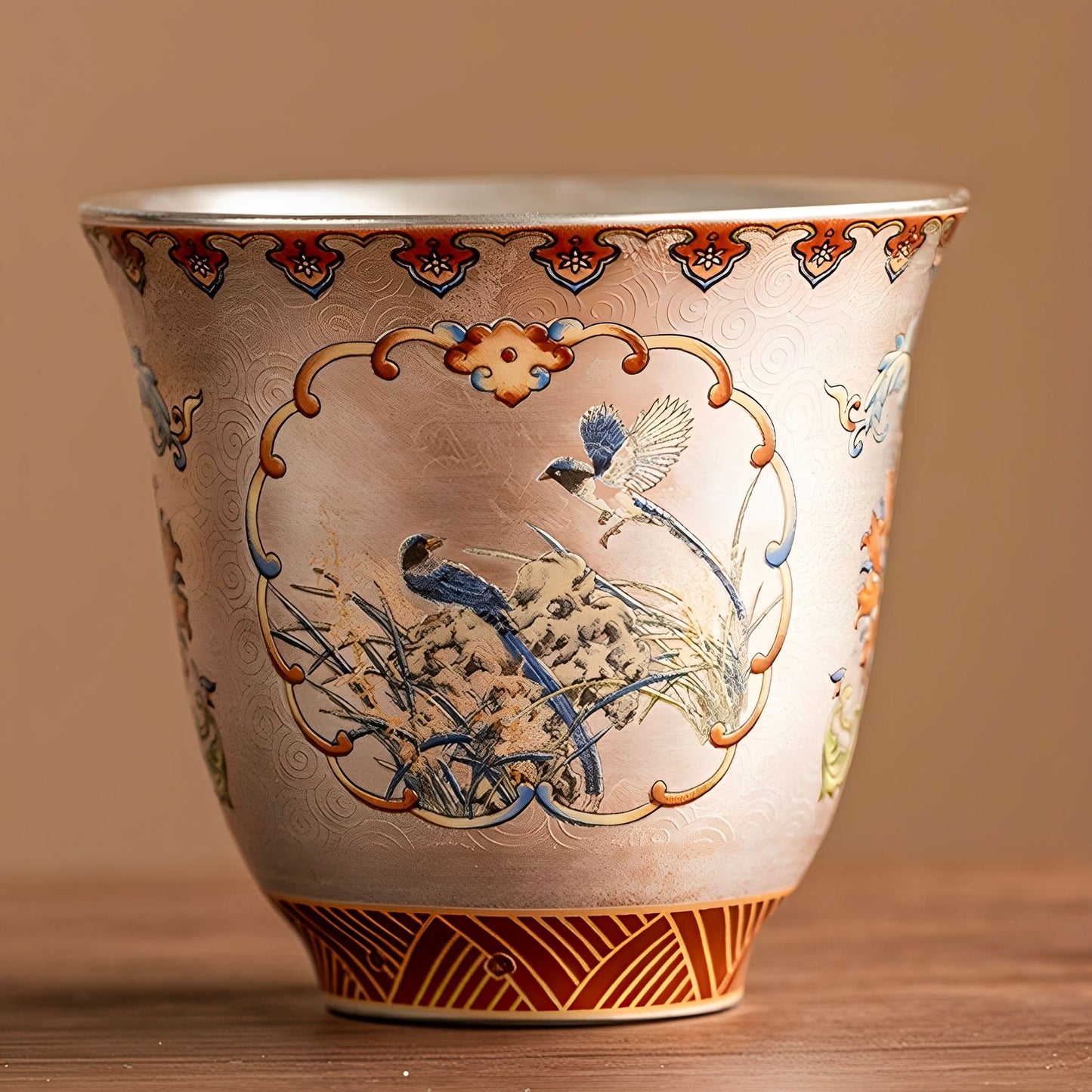Leeculture
Silver-Gilt Enamel Tea Cup
Silver-Gilt Enamel Tea Cup
无法加载取货服务可用情况
1. Historical Roots & Cultural Significance
The Master's Cup (主人杯 Zhǔrén Bēi), a centerpiece of Chinese tea culture, traces its origins to ancient aristocratic traditions. As early as the Han Dynasty (206 BCE–220 CE), tea utensils symbolized social status, with records of "master's tea bowls" distinguishing hosts from guests
. By the Tang Dynasty (618–907 CE), tea banquets formalized the use of specialized cups for hosts, while the Song Dynasty (960–1279 CE) elevated this practice through the tea-whisking ceremony, where literati embraced "dedicated vessels" to reflect refinement
. This ethos evolved into a cultural ritual, blending status, artistry, and hospitality.
2. Craftsmanship: A Marriage of Art and Philosophy
Chinese master's cups are masterclasses in traditional craftsmanship:
- Symbolic Motifs: Designs often incorporate auspicious elements like xiangyun (祥云, "auspicious clouds") for harmony and Five Blessings (五福 Wǔfú)—longevity, prosperity, health, virtue, and peaceful demise—etched or painted to convey blessings
. Dragons, symbolizing imperial power and cosmic energy, adorn cups like the "Soaring Dragon" series, embodying majesty through hand-carved reliefs.
- Techniques: The su-shao (素烧, "unglazed firing") method, seen in the Xiangyun Five Blessings Cup, involves high-temperature kilning to create a rustic, porous texture ideal for tea aroma retention
. Meanwhile, Xiling Seal Society’s collaborations showcase calligraphy and seals of renowned scholars, merging ceramic art with literati culture.
- Materials: From Yixing purple clay (prized for enhancing oolong tea’s richness) to translucent celadon porcelain, material choices reflect both aesthetics and functionality. For example, Jingdezhen’s "Dragon Soar" cups exemplify centuries-old ceramic techniques, requiring over 10 meticulous steps
3. Beyond Utility: Identity and Social Ritual
More than a vessel, the Master's Cup is a cultural statement. In Tang tea gatherings, it signaled the host’s authority; today, it serves as a "social currency" in business or familial settings, conveying respect and discernment
. Collectors often seek cups with historical narratives—such as replicas of Ming Dynasty scholar cups or pieces inscribed with poetry—transforming them into heirlooms that bridge generations
4. Modern Revival & Global Resonance
Contemporary artisans reinterpret tradition: Xiling Seal Society’s Master's Cups blend ancient seal-carving art with minimalist designs, while workshops in Longquan revive Song-era celadon glazes. These creations honor heritage while appealing to global audiences seeking authenticity
In Essence
The Master's Cup epitomizes China’s tea philosophy—where humility meets grandeur, and everyday rituals become transcendent. As the poet Lu Tong mused, "A cup holds mountains and rivers"; each sip, guided by this vessel, is a dialogue with millennia of culture.
Share


